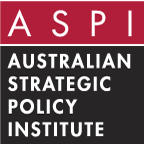Hybrid threats targeting Australia

The following article is written by the Strategist which is
... is the commentary and analysis site of the Australian Strategic Policy Institute (ASPI), which is an independent, non-partisan think tank based in Canberra. ASPI is widely recognized for its contributions to public discussions on strategic policy issues in Australia and internationally, particularly in the Indo-Pacific region1. The views expressed on The Strategist are those of individual authors and do not necessarily represent ASPI’s official stance.
Mapping a decade’s worth of hybrid threats targeting Australia | The Strategist
Hybrid threats, enabled by digital technologies and fuelled by geostrategic competition, are reshaping international security and global norms. Most often, states (commonly working through non-state proxies) are exploiting cybersecurity vulnerabilities and engaging in economic coercion,…

A few extracts from the article that I found interesting.
We collected data from sources including government statements, media reports, cyber firm alerts and think tank reports. We also cross-checked reports, making sure the counted activities were reported across multiple credible sources. We assessed whether these past hybrid activities were state-linked and sorted the activities into six threat categories: economic coercion; foreign interference; narrative and information campaigns; cyberattack; military and paramilitary coercion; and diplomatic coercion.
ASPI data shows that during the nine-year period, the most frequent activities were cyber in nature, including attacks and intrusions, accounting for around 35 percent of total activities. Most reported cyberattacks were perpetrated by China-linked hackers, including Naikon, APT40, APT27 and Aoqin Dragon. Their targets included the Australian government and Australian companies and critical infrastructure providers. Iranian state-sponsored cyber actors—including Fox Kitten and APT42—attempted to infiltrate industrial control systems in Australia as early as 2015 but were only detected a year later.
Military and paramilitary coercion, which accounted for around 15 percent of recorded hybrid activities, have seen a noticeable uptick in the past year
Interesting is it not.
#enoughsaid
